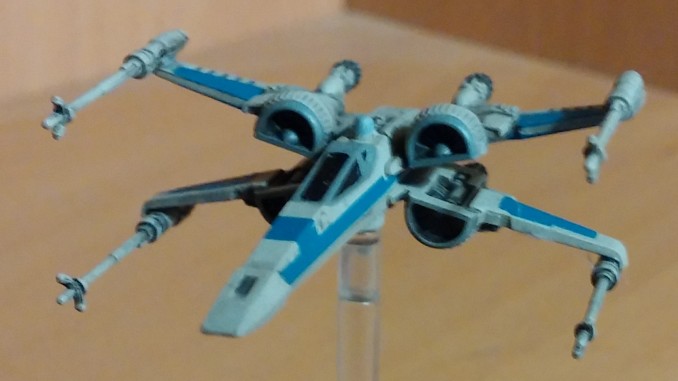
This week we’re all taking a look back a game we loved from the past. But I couldn’t pick just one. There are way to many games that have helped define my past.
HeroQuest
After last week’s look at Heroica and how it reminded me of HeroQuest I decided that would be the place to start. For those of you who don’t know, HeroQuest is a game from the 1990’s that is, sadly, no longer in print. You can still find copies out there but they aren’t cheap. For example this one on Amazon is going for over $400.
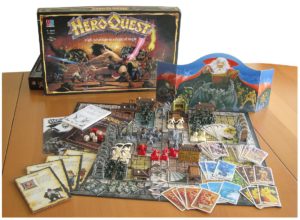 Unfortunately, I don’t have my old copy on hand and am not prepared to shell out $400 so everything said here is based on 20+ year old memories. Much like Heroica, this game is essentially a D&D dungeon crawl. You play one of four heroes embarking into a dungeon to defeat an evil wizard, kill monsters and, most importantly, get loot. The board has predrawn walls and rooms which limit your potential maps to some extent. But the doors, furniture and other items were 3D items you could place anywhere which allowed for a variety in maps. Not all rooms would be used in each map while sometimes rooms that appeared to not exist would actually be hidden behind a secret door. This allowed for plenty of variety between games.
Unfortunately, I don’t have my old copy on hand and am not prepared to shell out $400 so everything said here is based on 20+ year old memories. Much like Heroica, this game is essentially a D&D dungeon crawl. You play one of four heroes embarking into a dungeon to defeat an evil wizard, kill monsters and, most importantly, get loot. The board has predrawn walls and rooms which limit your potential maps to some extent. But the doors, furniture and other items were 3D items you could place anywhere which allowed for a variety in maps. Not all rooms would be used in each map while sometimes rooms that appeared to not exist would actually be hidden behind a secret door. This allowed for plenty of variety between games.
What really gave the game some depth was that loot carried over from game to game. Any cool items you found would stay with you until your character died (which wasn’t uncommon either). I don’t recall any leveling mechanic but even without that the gear acquisition made the game stand out for a kid. You played a character several times and he got more powerful. While not a very unique game mechanic it’s not all that common for board games, especially in the 90’s.
It was also one of the first semi-cooperative games I ever played. One person played the roll of the evil wizard (essentially the GM) who set up the board and controlled the monsters. But the rest of the players were on the same team. There were different types of treasure which were better suited to the different heroes so that helped limit any fight over loot. Each had different strengths so could help each other over come the variety of monsters. The barbarian for instance, was strong and tough but weak to magic (which the monsters could use) while the wizard was frail but had strong magic defense and could use magic himself.
The game also introduced me to the concept of different types of weapons. Before, there were swords and bows and arrows. But this game had daggers, short swords, long swords, broadswords, etc. Each had different effects. Which for a 10-12yr old boy was pretty awesome. Different types of swords? Yes, collect them all!
I credit this game for getting me into the fantasy genre in the first place. It had all the trapping of more sophisticated roleplaying games while being easy to play and introduce to new players.
If you want to know what the best thing about Hero Quest is check out this video:
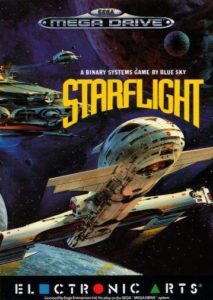 Starflight
Starflight
Released: 1991
System: Sega Genesis
This classic space sim game was my first adventure into the ability to save a game. The cartridge was extra large and had a small amount of writable memory on it. Before this, all the games I played were arcade style; no save points, 3 lives, you’re out. I played the hell out of this game when I was a kid. I thought it was the height of awesomeness that you had a space ship, could fly whereever you wanted, could upgrade the ship, and fight (or talk to) lots of alien races.
For such an old game, it had a lot of things you could do. Many of which don’t exist in present day games. You had to go and explore a great big galaxy. Each system had a different planetary set up. Some were empty, some had aliens in them. Scattered around the galaxy were artifacts and clues to the location of said artifacts. It was a true exploration game.
No game has come close to its open universe. Since movement was completely open, you could go anywhere you wanted. But if you crossed into space controlled by an alien species, they would confront you. You might be able to talk your way out or you might have to fight your way through them. You also had a crew that you could level up. Some aliens hated each other, though they all got along on your ship. But if you had certain species on board, their enemies would blow you up, no questions asked.
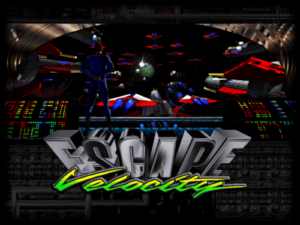 Escape Velocity
Escape Velocity
Release: 1996
System: Macintosh
Escape Velocity, and its two successors Override and Nova, were my first space desk top game. Being on a computer, the interface was much easier to use than Starflight. The graphics were also several steps up. Using a series of jump points rather than open galaxy flying, it lost some of the exploration factor that Starflight had, but it’s galaxy was still big enough to explore.
What you could do in the game was more varied than Starflight too. Instead of just exploring, mining and trying to save the galaxy, you could also engage in commerce, join or oppress a rebellion, or become a pirate. There have been many games like it since,
Unlike Starflight, you could change ships. There were a variety of ships you could buy, ranging from shuttles to transports to fighters to military cruisers. This part and the loss of the crew mechanic is kind of a mixed bag. On one hand, upgrading ships and becoming more powerful was pretty fun. But on the other, it lost some of the emotional connection.
Together these two games really defined what sci-fi and space RPG’s looked like for me. Every game since has been about capturing the feel of playing these games. Even now when I toy with things like playing a Technician in Edge of the Empire I’m inspired to upgrade my ships like you could do in these games.
These games have even inspired my writing. My main character of my Aristeia series personal ship, the Cutty Sark, borrowed design elements from the Clipper ship in Escape Velocity.
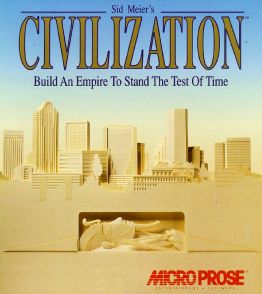 Civilization
Civilization
Release: 1991-2016
System: Mac/PC
Ah, Civilization, no look at games of yore could be complete with talking about this series. I’ve played every version and every expansion on the PC. Each one has it’s own unique flavor, while borrowing from the Civ games that came before. The great thing about Civ is every map is different, every game different. You can build a massive army, play defensively, build an economic or cultural powerhouse. Each provides a slightly different style. Though, I almost always resort to some form of warfare.
The AI has always been pretty stupid overall, though that doesn’t mean it is a pushover. Playing against people is not something I’ve done much; games take such a long time it’s hard to coordinate. Civ 5, with the hex and one tile per square rule, has done the best job with actually giving the AI some combat intelligence. You can’t just attack a weaker unit and then be protected by a stronger unit.
Starting a new game, finding a great place to build your colonies, rushing to secure good land and defend yourself from barbarians, always brings me back. I would always start a Civ game just around the time school would get out, shortly after the AC would go on continuously for the next five months. I’ve continued that tradition almost every year for over 25 years now. It’s a part of summer starting.
